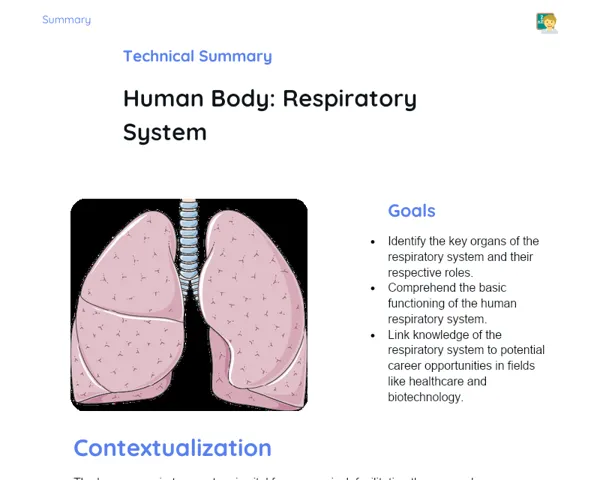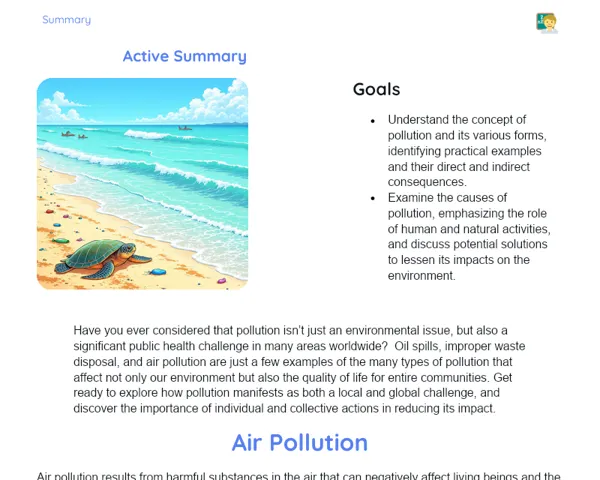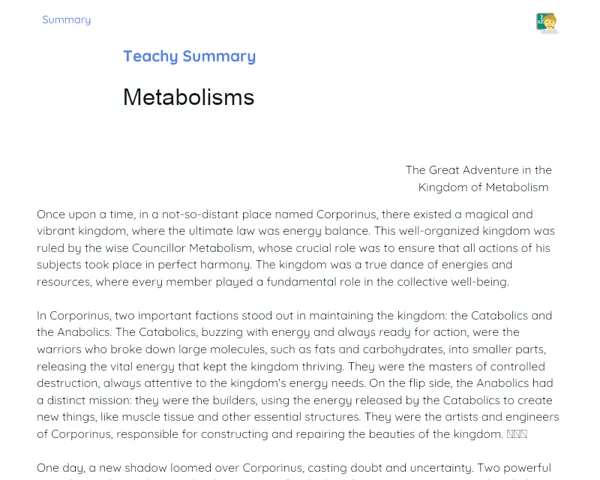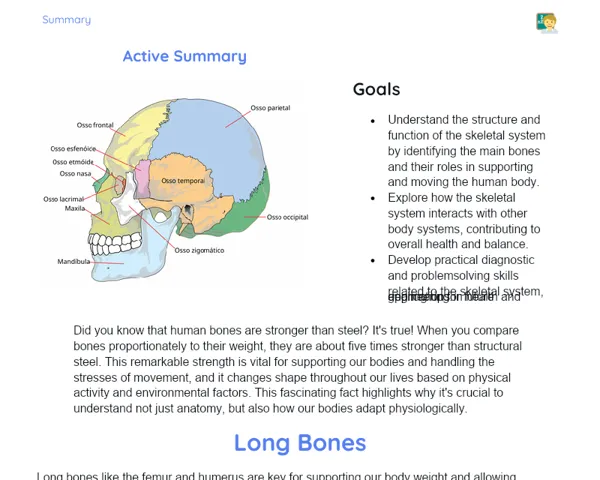Socioemotional Summary Conclusion
Goals
1. Recognise the main types of animal waste: ammonia, urea, and uric acid.
2. Identify which animals produce these wastes.
3. Connect the characteristics of these wastes to different animal groups.
Contextualization
Have you ever thought about how various animals handle their waste? 🐟💧 Each species has its own unique way of getting rid of substances it doesn’t need anymore, and understanding these processes can help us protect our ecosystems. Get ready to explore how fish, mammals, and birds excrete their waste, and how these incredible methods impact life all around us! 🌍✨
Exercising Your Knowledge
Ammonia
Ammonia is a highly toxic waste primarily produced by aquatic animals such as fish. Its toxicity means it needs to be quickly diluted in water, which is readily available in their habitats. This effective excretion method is crucial for their survival and highlights the deep connection between these creatures and their environment.
-
High toxicity: Ammonia is extremely toxic and can be lethal if it builds up in the body.
-
Need for dilution: Because of its toxicity, it needs to be rapidly diluted in large amounts of water.
-
Aquatic animals: Mainly excreted by fish and other aquatic creatures that benefit from constant water for dilution.
Urea
Urea is less toxic than ammonia and is primarily produced by mammals, including humans. Being water-soluble, it can be efficiently eliminated through urine. This adaptation helps conserve water in terrestrial environments where water may not be as abundant.
-
Less toxic: Urea is less harmful than ammonia and can be stored in the body for some time before it's excreted.
-
Water-soluble: This property allows it to be excreted through the urinary system in a dissolved form, making elimination easier.
-
Mammals: Mainly produced by mammals like humans, and some amphibians adapted to life on land.
Uric Acid
Uric acid has the lowest toxicity of the three waste types and is found in birds, reptiles, and some insects. This compound is insoluble in water and is excreted as a semi-solid paste, which is a great advantage for water conservation, especially for animals in dry environments.
-
Less toxic: Uric acid is less harmful than both urea and ammonia.
-
Insoluble in water: It’s excreted as a semi-solid paste, helping to minimise water loss.
-
Birds and reptiles: Common in these species, showing adaptations to environments where conserving water is essential.
Key Terms
-
Excretion: The process of getting rid of metabolic waste to maintain balance within the body.
-
Ammonia: Highly toxic waste that can be easily diluted in aquatic environments.
-
Urea: Less toxic waste compared to ammonia, water-soluble, and typical in mammals.
-
Uric Acid: Waste with low toxicity, insoluble in water, excreted by birds and reptiles.
For Reflection
-
How does the environment influence the various excretion strategies in animals?
-
How can understanding the types of waste shape our view on the importance of conserving natural habitats?
-
What socio-emotional skills were necessary for the group activity, and how can they be applied in other situations?
Important Conclusions
-
The different types of waste—ammonia, urea, and uric acid—vary in toxicity and how they're eliminated by animals.
-
Ammonia, being highly toxic, is excreted by aquatic creatures like fish, where there's a ready supply of water for dilution.
-
Urea, which is less toxic than ammonia, is produced by mammals and some amphibians, being water-soluble to facilitate elimination on land.
-
Uric acid, with low toxicity and insoluble in water, is eliminated by birds and reptiles, making it easier for them to conserve water in dry areas.
Impacts on Society
Understanding the different types of waste and their links to animal habitats helps us grasp how evolutionary adaptations support survival in diverse ecosystems. This knowledge is essential for developing conservation practices that respect and maintain the rich biodiversity of our natural surroundings.
Plus, by studying the excretion methods of various animals, we can use this insight to create more efficient and sustainable technologies in waste management and water resource conservation. This awareness not only makes us more ecologically responsible but also nurtures our connection to the creatures we share this planet with, promoting empathy and a sense of environmental stewardship.
Dealing with Emotions
As you dive into this topic, try acknowledging your feelings about animal excretion, whether it's surprise, curiosity, or confusion. Reflect on what’s triggering these emotions—perhaps it’s the complexity of the subject or its connection to animal life. Name these feelings and express them appropriately, whether that be through a chat with a friend or jotting down your thoughts in a journal. Finally, manage your emotions with techniques like deep breathing or taking a moment to gather your thoughts and calm your mind.
Study Tips
-
Create flashcards highlighting the main types of waste and the animals that produce them, adding sketches or diagrams to enhance memorisation.
-
Form small study groups to chat about the topic and compare the different excretory systems and their adaptations to various environments.
-
Watch documentaries or read articles that cover animal physiology and excretion processes, enriching your understanding and connecting classroom concepts to real-world examples.



